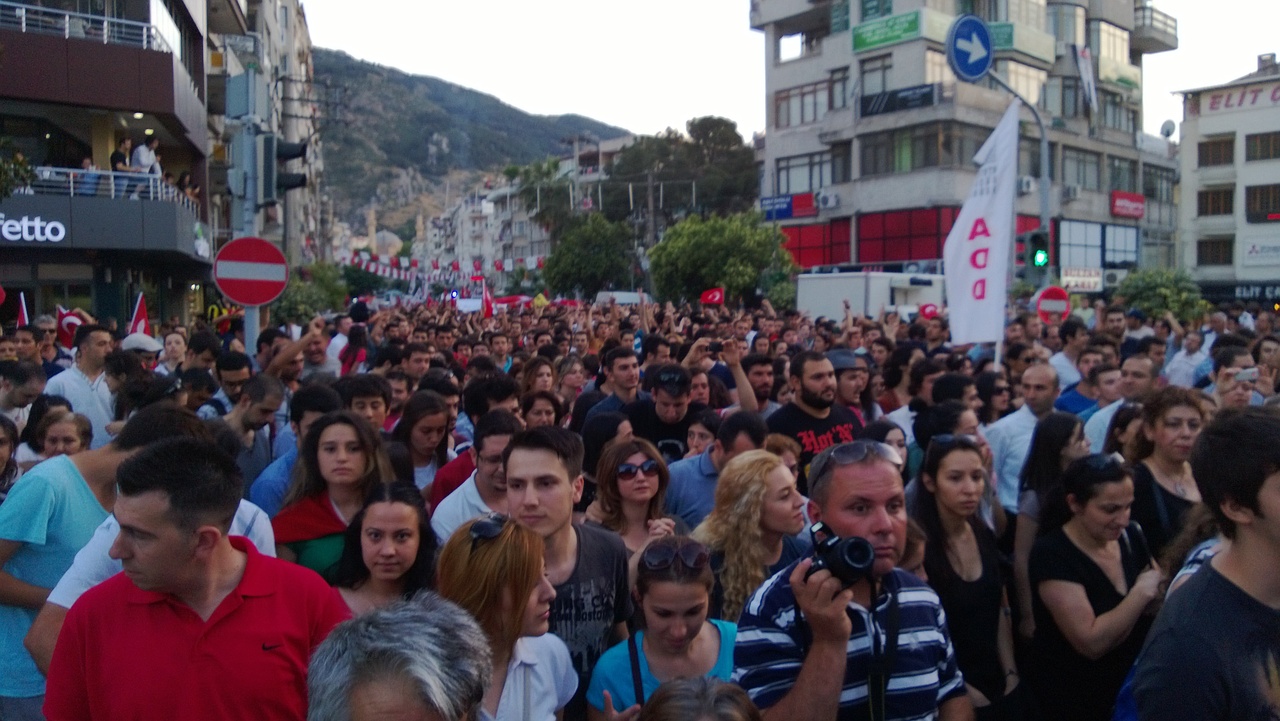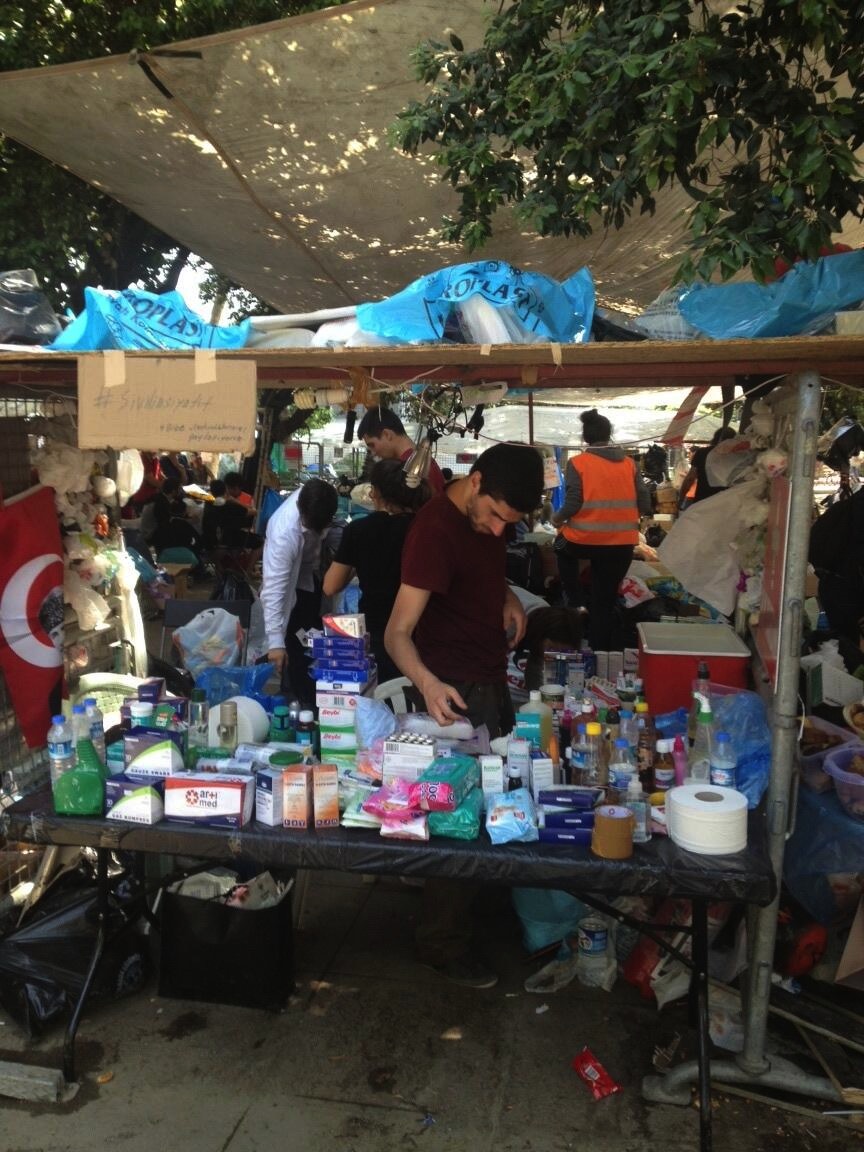Submitted by Berrin Chatzi Chousein
The City Of Resistance
Turkey Architecture News - Jul 14, 2013 - 16:24 8796 views
ISTANBUL’S GEZI PARK AND ITS BRIEF LIFE AS A FULLY-FUNCTIONING COMMUNE

THOUSANDS OF PEOPLE TOOK TO THE STREETS TO PROTEST AGAINST THE PROPOSED DESTRUCTION OF GEZI PARK IN ISTANBUL. (PHOTO COURTESY OF TUMBLR)
In the current era of relative political instability, events in Istanbul and Cairo have loomed large. Photos of thousands of people assembling in public places present an image of massive state failure alongside impressive unity among populations. We have become familiar with names of far-spread parks and squares: Taksim or Tahrir, because for better or worse, people occupy these places to register their discontent. In the case of Gezi Park, next to Taksim Square in central Istanbul, people built what Merve Bedir calls here a “City of Resistance”: an urban form that showed the potential there is for power through community.
“The polis, properly speaking, is not the city-state in its physical location; it is the space of appearance, the organization of the people as it arises out of acting and speaking together, and its true space lies between people living together for this purpose, no matter where they happen to be.”
- Hannah Arendt, The Human Condition
When the police retreated from Taksim Square after the first battle in May of this year, people took over the adjoining Gezi Park with tents, workshops, a library, an infirmary, a warehouse, a kitchen, a café, a TV and radio station, and many other things. Free film screenings, book readings, and yoga classes became daily activities there. Groups with a range of different ideologies joined in to reinforce the south-east barricades that separated Gezi Park from Taksim Square. Another adjacent small public park, closed by the municipality some time ago, was incorporated into Gezi Park and made into an organic garden. The people who came into the park after that first clash collected and cleared the garbage off the streets and a solar cooker was brought in by Greenpeace. This is how the city of resistance arose in Istanbul.

YOGA CLASSES ALSO TOOK PLACE IN THE CENTER OF THE PARK, AS PEOPLE CAME TOGETHER TO DEFEND THE SPACE. (PHOTO: MERVE BEDIR)
Most of the political stalls were located at the main platform of Gezi Park, facing Taksim Square. The middle section of the park was a mix of “residential zone” and further political stalls. The pre-existing main fountain and a children’s castle were the other major elements of this section. The east side was mostly residential, but also housed the infirmary, the common kitchen, the café, the TV and radio station and the stage. It was the lowest part of the park logistically, but as an area was still much higher than the surrounding street level, hence still easy to defend from the police.

A PLAN OF GEZI PARK SHOWING THE DIFFERENT 'URBAN' DISTRICTS. (IMAGE: MERVE BEDIR)
The so-called “downtown” part of the park had a more organic layout and included the main storage area from which much needed medical and food supplies were distributed, all of them donated by the people of Istanbul and the rest of the world. Here also were the reclaimed park/organic garden, the library, and the prayer area. An open-air temporary hotel provided accommodation for people from outside Istanbul. At the border between the middle section and downtown, stood a memorial in honor of those who died: with the words “Taksim to the People” spelled out with candles and lit every evening at sunset.

AN INFIRMARY STAND IN THE CENTRE OF THE PARK PROVIDED THE PROTESTERS WITH MEDICAL ESSENTIALS. (PHOTO: MERVE BEDIR)
The defense of this city of resistance relied on barricades, which were protected by the çArşı – as they style themselves – the famous football fanatics of Istanbul. Three of these barricades were made of burned-out police buses. The connection to Istiklal Street was always kept clear as an emergency exit.
The park was a space people cohabitated, where communication was almost intuitive and gathering effortless. The initial aim was to protect the park from the police by continuous occupation, but late in the evening on the first day, one inhabitant was already talking about the kind of vegetables he wanted to plant in the organic garden next summer. The free speech corner saw new battle tactics formulated, but in addition functioned as an open-air individual therapy center.

THE 'KITCHEN' STALL THAT OFFERED THE COMMUNITY-DONATED FOOD AND DRINK. (PHOTO COURTESY OF TUMBLR)
Almost a week after its settlement, the police entered the park again, and cleared up the commune and all its elements. But Gezi Park will be remembered: not only as the symbol of a movement of solidarity and resistance in Turkey, in a period of global governance crisis, but also as a significant example of a city of resistance.
by Merve Bedir
*Merve Bedir is an architect based between Rotterdam and Istanbul. She is a PhD candidate in the Faculty of Architecture, Delft University of Technology and partner of Land and Civilization Compositions.
> via Uncube
